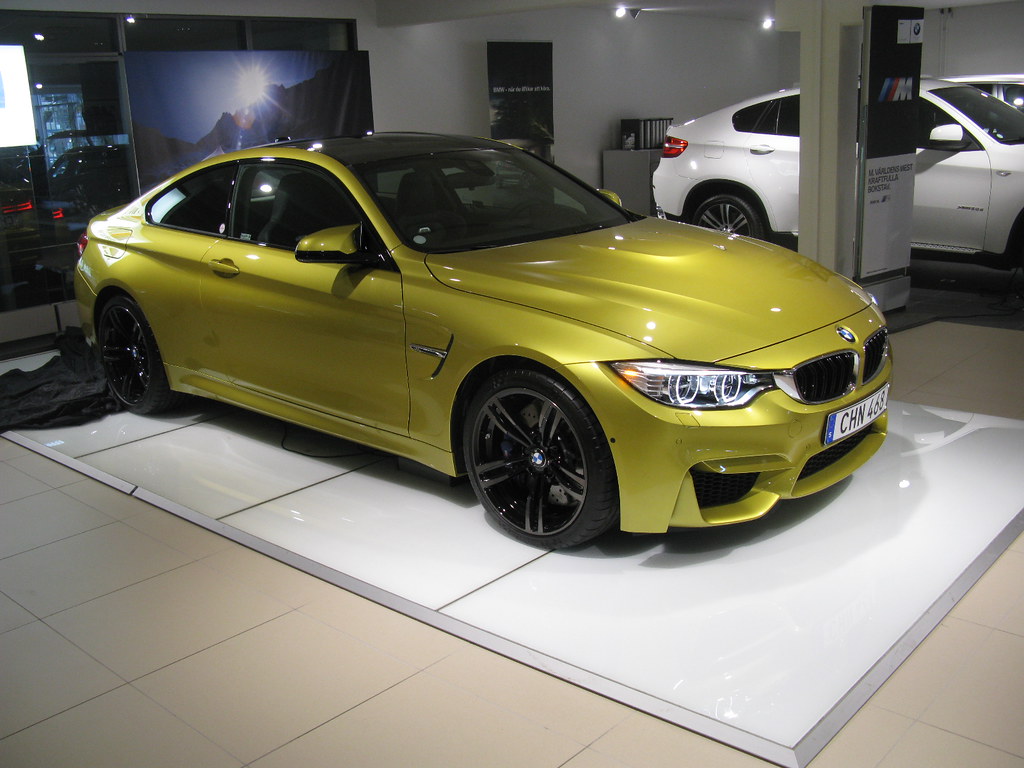
There’s a raw, visceral thrill that only a truly exceptional car chase can deliver to moviegoers. It’s a primal dance of speed, precision, and pure chaos that transcends dialogue, telling a story through the roar of engines, the screech of tires, and the sheer audacity of impossible stunts. These sequences are not just filler; they are the very crucible where a director’s skill is tested, an opportunity to weave narrative through breathtaking visual spectacle alone.
From the dawn of cinema, the automotive pursuit has been a cornerstone of action filmmaking, constantly evolving but always aiming for that heart-stopping impact. While modern cinema sometimes leans on the dazzling yet detached allure of CGI, the golden age of practical effects and ingenious stunt work continues to hold a special, revered place in our collective memory. We, as fans, bring our own unique preferences to the table, whether it’s the breakneck speed, the slow-burning tension, or the unexpected comedic genius.
Today, we’re putting the pedal to the metal and embarking on an exhilarating journey through the annals of film history to celebrate some of the most iconic car chases ever conceived. These are the sequences that didn’t just entertain; they redefined what was possible, blew our minds, and firmly cemented their place in the pantheon of cinematic greatness. Prepare to have your adrenaline pumping as we dive into the first half of our definitive list!
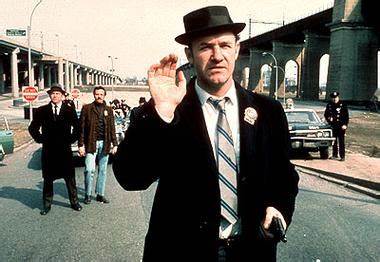
1. **The French Connection (1971)**Well, it absolutely had to be this one, didn’t it? William Friedkin’s 1971 crime thriller, based on a true story, delivers what is arguably the rawest, most intense car chase of all time. Detective Jimmy “Popeye” Doyle, played with frenetic energy by Gene Hackman, is on a relentless pursuit of hitman Pierre, who has escaped onto an L train in New York City.
What makes this sequence so profoundly impactful is its almost documentary-like realism. Friedkin, with his background in documentary filmmaking, injected an unparalleled sense of authenticity into the scene. The story goes that after an initial lackluster take, Friedkin challenged stunt driver Bill Hickman, who responded, “You get in the car with me, and I’ll show you some driving.” This led to a blistering drive through 26 blocks at 90 miles an hour, with Friedkin capturing every moment.
This heart-pounding sequence, which unfolds on the gritty streets of Brooklyn, features Doyle absolutely thrashing his commandeered car, screaming and punching his dashboard in exasperation. Cars and bystanders dive out of his way, creating a chaotic ballet of near-misses. It’s a scene so frenetic and exhausting that it feels like you’re right there in the passenger seat, experiencing every terrifying swerve.
The most astonishing detail is that the chase was shot without proper permits, often spilling into actual traffic, leading to unplanned collisions that were kept in the final cut. This guerrilla filmmaking style gives the whole sequence a ragged, realistic feel that few films have managed to capture since. It’s a truly blistering scene, with the shaky camera often placed in the back seat or on the bonnet, making it feel dangerously real and cementing its iconic status.
Read more about: Unpacking M. Night Shyamalan’s ‘Old’: 14 Cinematic Features That Redefine Our Perception of Time
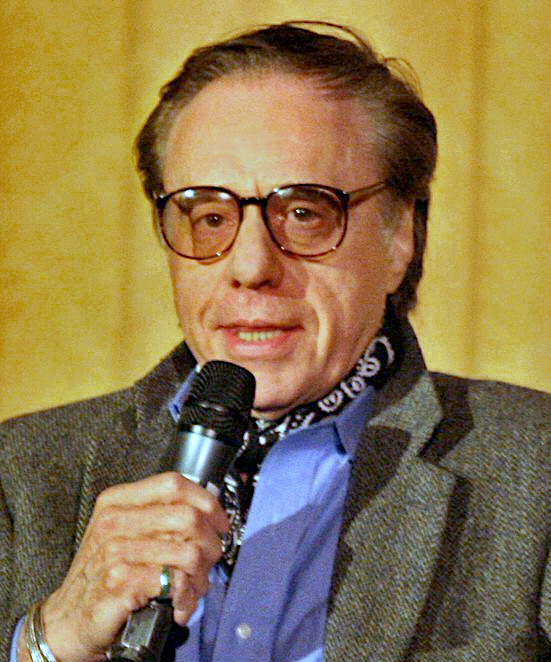
2. **What’s Up Doc? (1972)**Switching gears from gritty realism to madcap mayhem, Peter Bogdanovich’s “What’s Up Doc?” delivers one of the most chaotic and genuinely funny car chases ever committed to film. This brilliant homage to classic screwball comedies culminates in a spectacular sequence as a disparate collection of oddballs hurtle down the iconic hills of San Francisco.
Bogdanovich reportedly spent a quarter of the film’s entire budget on this single chase, and every penny was incredibly well-spent. The sequence is densely packed with visual gags and punchlines that consistently surprise the audience. From workmen gingerly carrying a glass panel across the street only for chaos to ensue, to a minivan gradually flattening as it becomes an unwitting participant in multiple collisions, the humor is relentless.
One particularly memorable moment involves a poor guy in a convertible who puts his face through a canopy the entire length of a pier before spectacularly diving off the end. It’s a testament to the film’s technical marvel, managing to be funny, exciting, and utterly unpredictable all at the same time. This sequence is a masterclass in comedic timing and stunt choreography.
“What’s Up Doc?” serves as a wonderful rejoinder to the more self-consciously cool car chases that often populate these lists. It’s reminiscent of the great Buster Keaton, even including an overt reference to his film “Seven Chances.” This chase proves that high-octane action doesn’t always need to be grim to be brilliant; sometimes, a good laugh is the best thrill of all.
Read more about: Buckle Up! 15 Movie Car Chases That Still Take Our Breath Away and Define Cinematic Cool!
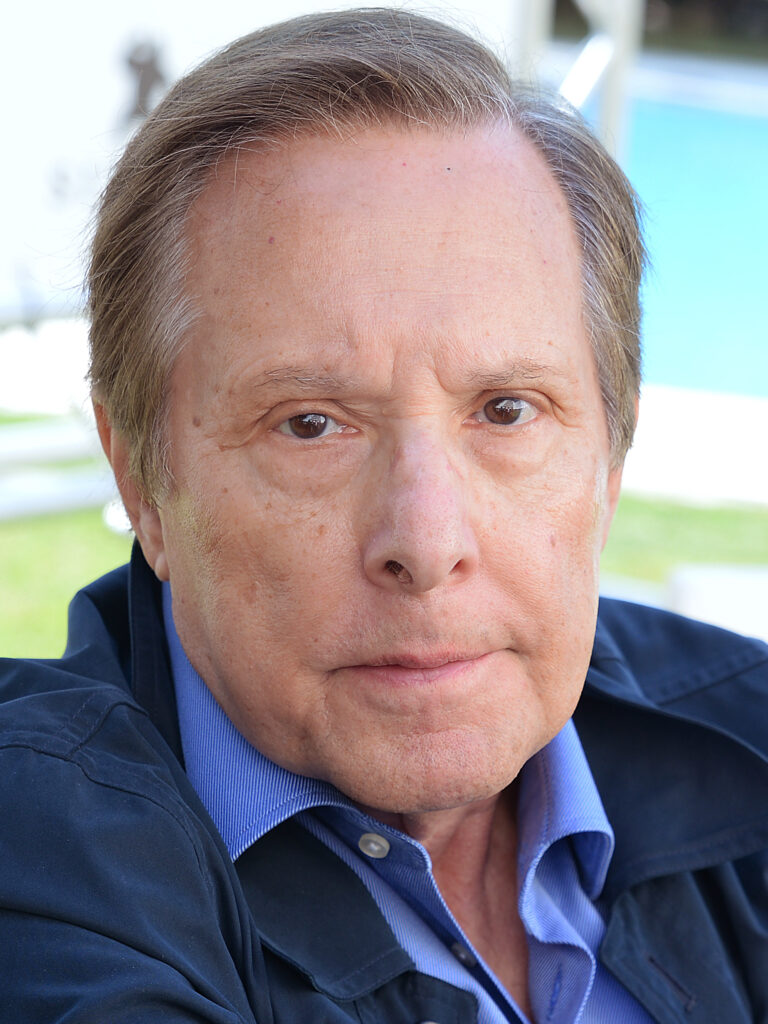
3. **To Live & Die In LA (1985)**William Friedkin returns to our list with “To Live & Die In LA,” a film that features a truly traumatizing chase, cleverly inverting the standard setup by having the detectives, Chance (William Petersen) and Vukovich (John Pankow), pursued by the gangsters. This 15-minute sequence, shot at the very end of filming as a safeguard, escalates to a point of near-hysteria, pushing the boundaries of on-screen tension.
The chase begins with a gloriously fluid shot that tracks the detectives’ car, then lifts to reveal the villains on a bridge above, before both cars converge onto the freeway. The intensity builds almost immediately, as Chance deftly dodges through a truck yard, only to escape his pursuers by daringly outracing a moving freight train. This is cinema at its most visceral, an absolute white-knuckle ride from start to finish.
Exiting underneath the 6th Street Bridge, the scene briefly transforms into a real-life “Grand Theft Auto” scenario, with gangsters popping up and firing at the detectives, blasting the back windscreen. The terrifying reality of the situation leads to an all-too-believable breakdown from Vukovich, with the terrified John Pankow barely having to act. This raw emotional response grounds the action in a palpable sense of danger.
The stakes are raised even further when Chance, surrounded by gangsters after getting back onto the freeway, makes the unthinkable decision to drive straight into oncoming traffic. Dodging and swerving to avoid a head-on collision, this nail-biting scene ratchets up the suspense to unbearable levels. It’s a bold, audacious move that almost certainly inspired similar sequences in later films, including “Ronin.” This chase is a masterclass in sustained, escalating tension.
Read more about: Beyond VHS: 15 ’80s Cult Classics That Still Spark Debate and Define an Era
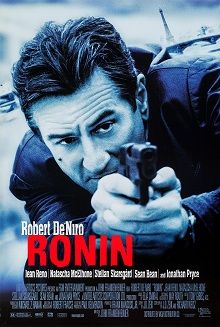
4. **Ronin (1998)**John Frankenheimer’s stylish spy thriller, “Ronin,” is long overdue for a reappraisal, especially for its absolutely immersive and suspenseful car chases. What makes these sequences so special is their staunch reliance on practical effects and the sheer talent of hundreds of stunt drivers, with virtually no reliance on CGI or camera tricks. This commitment to realism makes every moment feel genuinely dangerous.
While the film boasts an abundance of thrilling scenes, the standout is the chase through the Paris motorways featuring Sam (Robert De Niro) and Vincent (Jean Reno). This sequence involved an incredible 300 stunt drivers, all meticulously choreographed to create a symphony of high-speed chaos. The true nail-biting comes when the two cars eventually head the wrong way down a one-way motorway tunnel, a heart-stopping moment that keeps you on the edge of your seat.
Frankenheimer achieved an even greater sense of immersion through his ingenious use of POV shots, mounting cameras directly on the car bonnets. This perspective plunges the audience directly into the thick of the action, making it feel as if you are experiencing the breakneck speed firsthand. Unlike many chases where the sense of velocity can feel artificial, the cars in “Ronin” genuinely appear to be going incredibly fast and often out of control.
Much of this terrifying authenticity stems from the fact that the cars were actually driven at speeds of around 120 miles an hour during these scenes. Even more incredibly, the actors themselves were often sitting in the speeding cars, meaning those looks of apprehension and fear on their faces are very, very real. “Ronin” delivers a masterclass in practical, high-stakes car action that truly resonates with dedicated fans.
Read more about: Buckle Up! 15 Movie Car Chases That Still Take Our Breath Away and Define Cinematic Cool!

5. **Bullitt (1968)**This is, arguably, the coolest car chase in the entire history of cinema, and it set an untouchable standard for every subsequent scene like it. “Bullitt,” directed by Peter Yates and starring the legendary Steve McQueen as Detective Frank Bullitt, is best remembered for its groundbreaking car chase sequences and its gritty portrayal of San Francisco’s crime-ridden streets.
The iconic pursuit takes place on the famously hilly streets of San Francisco, showcasing McQueen’s masterful driving as he maneuvers his Ford Mustang GT through narrow alleys and hairpin turns, relentlessly pursued by hitmen. The chase wasn’t even in the original script of the novel “Mute Witness”; it came about solely because McQueen passionately wanted to do it, and for that, we can all be eternally grateful.
The scene builds tension perfectly, initially accompanied by Lalo Schifrin’s languid score. In a nice little touch, one of the hitmen, played by Bill Hickman (who was also the incredible stunt driver), surreptitiously fastens his seatbelt just before making his break. Once the chase truly starts, the music cuts out completely, replaced by the raw, visceral sounds of roaring car engines and squealing tires as Bullitt and the criminals tear through the city and onto an open road in Santa Cruz, where the speed really ramps up.
Despite some continuity quirks—the same Volkswagen Beetle famously appears multiple times—the scene remains utterly thrilling today and proved to be the car chase to beat. The geography of San Francisco, with its steep roads, sees the muscle cars jump and shed metal with every bump and scrape. There’s no score, just the furious roar of their engines. It truly set the blueprint for car chases to come, with Steve McQueen in his absolute pomp, solidifying its place as a timeless action hero moment.
Read more about: The Pedestal Cracks: Unveiling 10 Deep Flaws in Automotive Visionaries and Industry Evolution
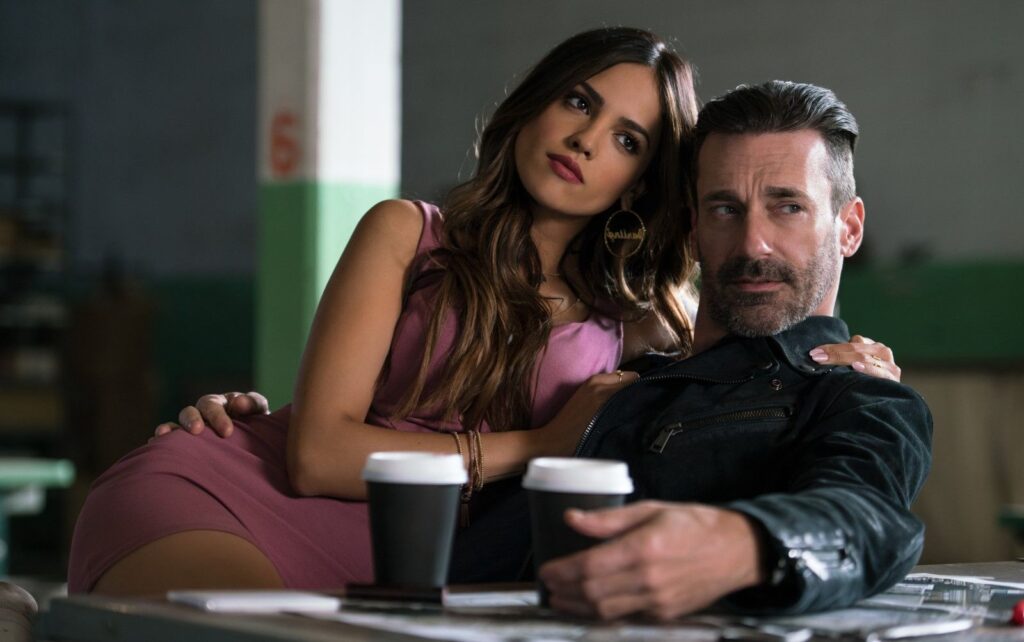
6. **Baby Driver (2017)**While many car chases are spectacularly constructed action sequences, Edgar Wright’s “Baby Driver” approaches vehicular mayhem with an entirely unique artistic flair. Here, the car chases are meticulously choreographed to resemble dance routines, rather than conventional pursuits, making it a standout in cinematic history. Wright’s technical prowess shines brightest in these sequences, elevating them far beyond simple stunts.
The film’s opening set piece is a nearly perfect, self-contained explosion of vehicular artistry, set to the pulsating beat of “Bell Bottoms” by the Jon Spencer Blues Explosion. Every single movement Baby (Ansel Elgort) makes behind the wheel is synchronized with the music. As the robbers make their escape, the sequence builds in scale and intensity along with the song, creating a breathtaking symphony of sound and motion.
Baby glides his car, perfectly in time with the music, even knocking police stingers around with a balletic precision. Other films might boast more spectacular stunts or higher stakes, but none can rival the fluid, almost dance-like driving displayed here. It’s less a case of mere showing off and more Wright demonstrating an inherently cinematic sequence, a true testament to his vision.
This musical flair makes the opening getaway immediately memorable, with the roar of the engine syncing up with the song’s guitar and drums. Few car chases can boast such incredible taste in music or such seamless integration of soundtrack and action. It’s an amazing spectacle to watch, a true fusion of automotive prowess and rhythmic artistry.
Read more about: Hollywood’s Heavyweights: 12 A-List Actors Who Absolutely Crushed Their Most Iconic Roles

7. **Mad Max: Fury Road (2015)**Upon witnessing “Mad Max: Fury Road,” even director Steven Soderbergh famously remarked, “I don’t understand how they’re not still shooting that film and I don’t understand how hundreds of people aren’t dead.” These are incredibly fair points, given George Miller’s jaw-dropping use of practical effects and tireless stunt work. The film is, without exaggeration, potentially the best action film of the 21st century so far, and it’s essentially one massive, continuous car chase.
It’s genuinely difficult to single out any particular scene, as the entire narrative is told almost exclusively through its relentless, high-octane action, with next to no expository dialogue. Imperator Furiosa (Charlize Theron) liberates the wives of dictator Immortan Joe by stealing a War Rig, aided by the captive Max (Tom Hardy), and what follows is a non-stop, full-throttle pursuit by Joe and his personal army.
Director George Miller masterfully sustains an unimaginable level of high-octane energy throughout the entire film, never once letting up. He introduces a wealth of creative set-ups that pay off organically within the story, enriching the experience without ever breaking the kinetic flow. The visuals are unique and vibrant, creating indelible images firmly embedded in our memories.
We witness Joe’s henchmen swinging onto the rig on poles, the War Boys leaping from one vehicle to another, and the entire convoy driving straight into an oncoming storm, creating moments of sheer awe. “Mad Max: Fury Road” achieves ceaseless, full-throttle thrills that never stop kicking ass, no matter how many times you watch it, a true triumph of visual storytelling and practical effects that remains utterly awe-inspiring.
Read more about: 15 Iconic Actors, 15 Forgettable Films: Ranking the Absolute Worst Movie Roles Taken by Hollywood’s Best
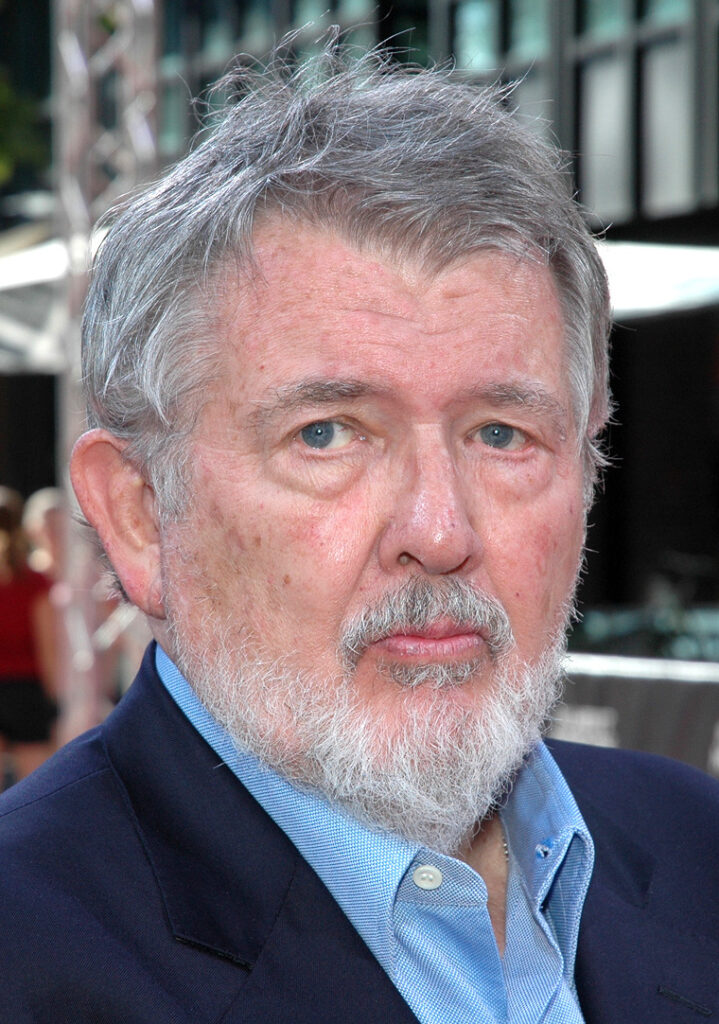
8. **The Driver (1978)**Walter Hill’s “The Driver” is a stripped-back neo-noir masterpiece, a pulpy blend of “Le Samourai” and “The Getaway.” It’s as taciturn as Ryan O’Neal’s unnamed lead character, with minimal dialogue, choosing instead to let the breathtaking action sequences do all the talking. This minimalist approach allows the car chases to shine as pure cinematic storytelling.
One thrilling set piece sees the Driver demonstrating his incredible abilities by systematically smashing a car to pieces in a parking lot, a testament to his precision and raw skill. However, the film’s absolute best chase unfolds right at the end, as the Driver pursues the thief who has stolen the crucial key to his locker, which contains his stolen money. It’s an exhilarating, frenetically shot sequence that captivates from start to finish.
The chase takes us from the freeway to a deserted parking lot, culminating in a tense showdown inside an abandoned warehouse. In this supremely suspenseful final act, the cars stalk each other in almost complete silence, transforming the pursuit into a thrilling game of chicken. It’s a dramatic, wordless ballet of metal and horsepower that builds incredible tension.
Hill has often stated that all his films are essentially Westerns, and this is especially true of “The Driver,” particularly its finale. The climactic chase effectively becomes a classic Western duel, but instead of guns, the protagonists face each other down with their vehicles. It’s a powerful, silent confrontation that perfectly embodies the film’s stoic, action-driven narrative and its lasting legacy in the genre.
Now, let’s put the pedal to the metal once more as we continue our high-octane journey! We’ve seen some incredible vehicular acrobatics and nail-biting escapes, but trust us, there’s still plenty of asphalt-shredding action left to explore. These next seven entries showcase inventive concepts, lasting cultural impact, and unique narrative techniques that prove the art of the automotive pursuit is as diverse as it is exciting. Get ready for more mind-blowing moments that cemented their place in action cinema history!
Read more about: Beyond the Bandit’s Charm: Unearthing the Intricate Life and Lingering Questions Surrounding Burt Reynolds’ Enduring Legacy
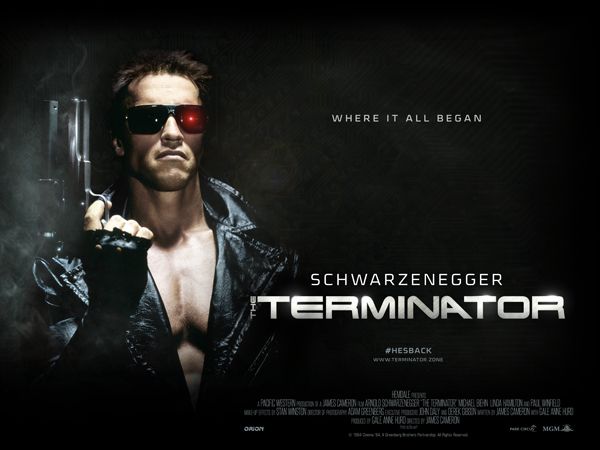
9. **Terminator 2: Judgment Day (1991)**While it might technically be a truck and motorbike chase, the iconic pursuit in James Cameron’s “Terminator 2: Judgment Day” is undeniably one of the most heart-stopping sequences ever put to film in the series. It’s a relentless ballet of destruction, showcasing the sheer, terrifying resolve of its liquid-metal villain.
The scene sees the teenage John Connor (Edward Furlong) desperately trying to escape on a dirt bike, only to be pursued by the sinister T-1000 (Robert Patrick) in a menacing tow truck. Adding to the chaos, the reprogrammed Terminator (Arnold Schwarzenegger) gives chase on a Harley Davidson, cocking his rifle in a cool nod to John Wayne in “True Grit.”
What truly elevates this sequence is the sheer intensity that director James Cameron injects into every frame. The T-1000, grimly determined, smashes its massive truck through everything in its path, gaining ground on Connor with terrifying speed. Meanwhile, the T-800 follows from above on the freeway, making for a multi-layered, explosive pursuit.
The Terminator’s breathtaking jump from a bridge down into the storm drain is a magnificent spectacle. But even more impressive is the supremely tense moment he speeds alongside the truck, overtaking it just fast enough to avoid being crushed against the wall. It’s a moment of pure, visceral suspense that exemplifies the film’s mastery of action. Arnie eventually grabs Connor, blasts the truck, and seemingly blows up the T-1000, delivering an immensely satisfying, albeit temporary, victory that still thrills audiences today.
Read more about: 15 Movie Character Deaths That Hurt Most: Unforgettable Moments With Wheeljack’s Passing & Casper’s Farewell

10. **Drive (2011)**Nicolas Winding Refn’s breakout Hollywood hit, “Drive,” delivers an opening sequence that remains one of the slickest and most unconventional car chases in modern cinema. It’s a direct and respectful reference to Walter Hill’s “The Driver,” yet manages to carve out its own uniquely cool identity.
We witness Ryan Gosling’s unnamed driver character expertly navigating the labyrinthine streets of LA after picking up a pair of thieves. What makes this chase so distinctive is its admirable restraint, a departure from the usual death-defying stunts. Instead, the driver relies on cunning and intelligence.
He uses his wit to stay one step ahead of the pursuing squad cars, listening in to police radio chatter. The most suspenseful moment isn’t a crash or a jump, but rather when the car is completely stationary, headlights off, patiently waiting for police helicopters and patrol cars to pass. It’s a masterclass in tension built from stillness.
The film’s pulsing score from Cliff Martinez, particularly The Chromatics’ “Tick of the Clock,” is an integral part of this scene’s enduring legacy. It throbs like a heartbeat, injecting the chase with a synthwave style that has become synonymous with the film’s aesthetic. This sequence perfectly sets up the driver’s enigmatic, effortlessly cool character, blending suspense and style into a truly unforgettable experience.
Read more about: Jennifer Lawrence’s Indie Renaissance: Unpacking the Buzz, Star Power, and Premiere Impact of ‘Die, My Love’
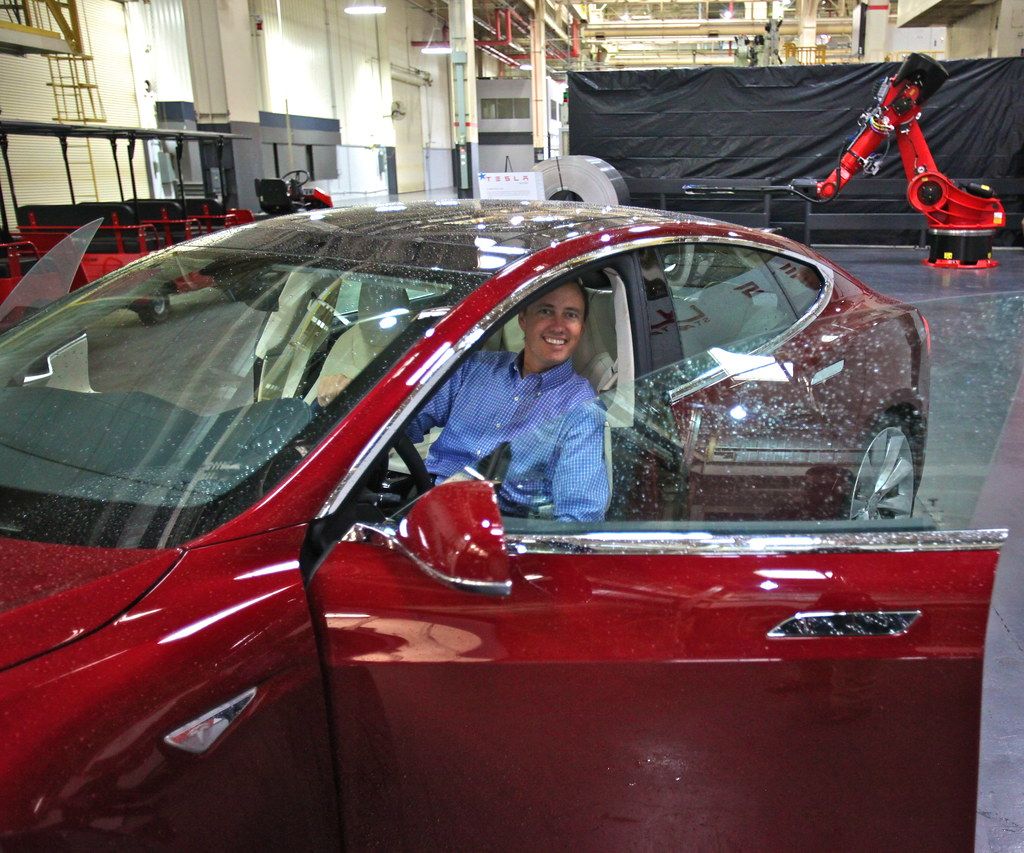
11. **The Road Warrior (1981)**Before “Mad Max: Fury Road” redefined post-apocalyptic action, “The Road Warrior” (also known as “Mad Max 2”) delivered what was arguably the definitive sci-fi car chase, a brutally nihilistic sequence brimming with jaw-dropping stunts. It still stands strong as a masterclass in gritty, high-stakes vehicular mayhem.
This climactic pursuit sees the desperate inhabitants of an isolated oil refinery making a break for it, driving an oil tanker away from their camp to create a diversion. Pursuing them are the marauders of the terrifying Lord Humungus, creating a relentless and desperate struggle for survival in the desolate Australian wasteland.
The misanthropic Max (Mel Gibson) takes the wheel of the rig, defended by a handful of guards who are swiftly dispatched with brutal efficiency and no fanfare. There are no noble last stands here; characters are unceremoniously thrown under the wheels, leaving Max, alongside The Feral Kid, largely alone as Humungus’ gang closes in. The dynamic camerawork, including incredible helicopter shots, provides a perfect, terrifying view of the action.
What makes the stunts even more impressive is that the driving and crashes are largely executed without massive explosions, focusing instead on raw impact. The film’s commitment to realism was so intense that one stuntman famously broke his legs during the chase, an injury George Miller kept in the final cut. While “Fury Road” is a modern marvel, “The Road Warrior” offers a grittiness and sparseness that makes this chase a truly thrilling, visceral watch, a testament to its enduring power and influence.
Read more about: Know the Legends? These 14 Scream Queens Were the Terrifying Rulers of Horror Across the Decades!

12. **The Italian Job (1969)**No discussion of iconic car chases would be complete without a salute to this absolute gem of British cinema, “The Italian Job.” While its literal cliffhanger ending is famous, the car chase that precedes it is an undeniable highlight, packed with fun and ingenious stunt work.
Michael Caine’s charismatic gang leads the Italian police on an unforgettable dance through the bustling streets of Turin, all while attempting to smuggle their stolen gold across the border into the Swiss Alps. And what better vehicles for this audacious heist than three iconic Mini Coopers? These small but mighty cars become stars in their own right.
This is a truly witty and wonderfully choreographed sequence, often reminiscent of a Jacques Tati film in its playful chaos. The Minis weave in and out of buildings, through a busy mall, and even daringly hide inside a car showroom for a few brief, tense seconds. One spectacular moment sees them driving onto the roof of the still-under-construction Torino Palavela, disappearing and reappearing as the bewildered police struggle to maneuver their larger vehicles.
The chase is made even more charming by the quintessentially British bickering amongst the gang members. Camp Freddie’s memorable line, “I think you might make an effort to keep up with the others, Tony,” provides a humorous, human touch. This lighthearted banter offers a wonderful contrast to the stoicism often found in other car chases, making “The Italian Job” a uniquely fun and endlessly rewatchable piece of cinematic history, brimming with incredible stunt driving and infectious charm.
Read more about: Beyond the Bandit’s Charm: Unearthing the Intricate Life and Lingering Questions Surrounding Burt Reynolds’ Enduring Legacy
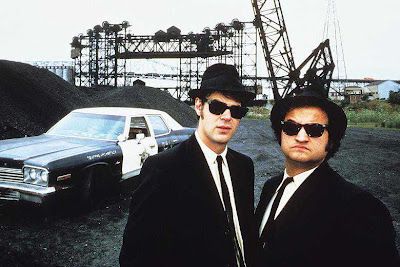
13. **The Blues Brothers (1980)**When it comes to madcap mayhem and vehicular destruction, few films can hold a candle to the grand finale of John Landis’ “The Blues Brothers.” This protracted chase isn’t just an action sequence; it’s a hilarious, anarchic spectacle that sets a benchmark for comedic car pursuits.
This incredible chase was shot almost entirely practically, utilizing an astonishing 13 different Bluesmobiles and a staggering 60 police cars. Entire city and suburban streets were shut down to accommodate the pandemonium, resulting in a final tally of 103 totaled cars – a record-breaking pile-up for its time.
The Blues Brothers, Jake (John Belushi) and Elwood (Dan Aykroyd), are in a frantic race against time to deposit their hard-earned money in a Chicago bank. Their mission is made infinitely more challenging by a relentless pursuit from the state police, vengeful country musicians, and even a group of Illinois Nazis! Landis masterfully fills the chase with ingenious visual gags and heart-stopping stunts.
One truly unforgettable moment sees the Bluesmobile launching spectacularly over a police cruiser, just clipping its siren light – a stunt the driver only attempted after Belushi and Aykroyd each offered him an additional $1,000. The chase culminates in a literal mountain of wrecked police cars, the Nazis plummeting from an uncompleted motorway bridge, and the Bluesmobile itself falling apart the moment the brothers finally shut its doors. It’s the perfect, hilarious punchline to one of the most outrageous and beloved chases ever filmed.
Read more about: Beyond the Bandit’s Charm: Unearthing the Intricate Life and Lingering Questions Surrounding Burt Reynolds’ Enduring Legacy
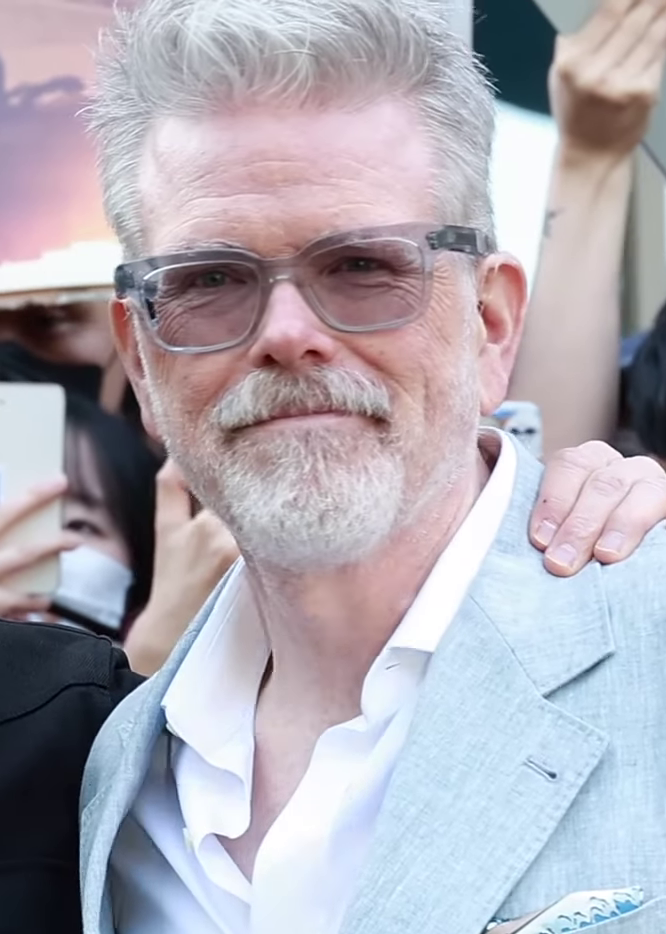
14. **The Way Of The Gun (2000)**Christopher McQuarrie’s underrated thriller, “The Way Of The Gun,” offers compelling proof that a car chase doesn’t need breakneck speed to be intensely gripping. This sequence earns its spot on our list for its sheer inventiveness and unconventional approach, reportedly inspired by a “Cops” episode.
After kidnapping the pregnant Juliette Lewis, career criminals Parker (Ryan Phillippe) and Longbaugh (Benicio Del Toro) must outwit a pair of clinically professional hired guns (Taye Diggs and Nicky Katt) hot on their tail. McQuarrie, known for his subversion of genre tropes, applies this to the chase, creating a scene that consistently defies expectations.
Instead of a high-speed sprint, Parker and Longbaugh lead their pursuers through a maze of narrow alleys, intentionally slowing to a crawl. This forces the bodyguards to stop, tempting them out of their car, only for the kidnappers to quickly jump back into theirs and speed off again. They establish a mesmerizing, frustrating rhythm of stop-and-start deception.
This cat-and-mouse game builds suspense with every repetition, culminating in a brilliant, abrupt reversal. As the bodyguards round a corner at speed, the kidnappers reverse straight into them, totally wrecking the pursuing car and leaving the hapless enforcers for the police. The sequence is punctuated by bizarre imagery, including the unforgettable sight of Diggs and Katt propelling their car forward with their feet, a surreal detail that perfectly encapsulates the film’s unique, ofilter brilliance.
Read more about: Beyond the Bandit’s Charm: Unearthing the Intricate Life and Lingering Questions Surrounding Burt Reynolds’ Enduring Legacy
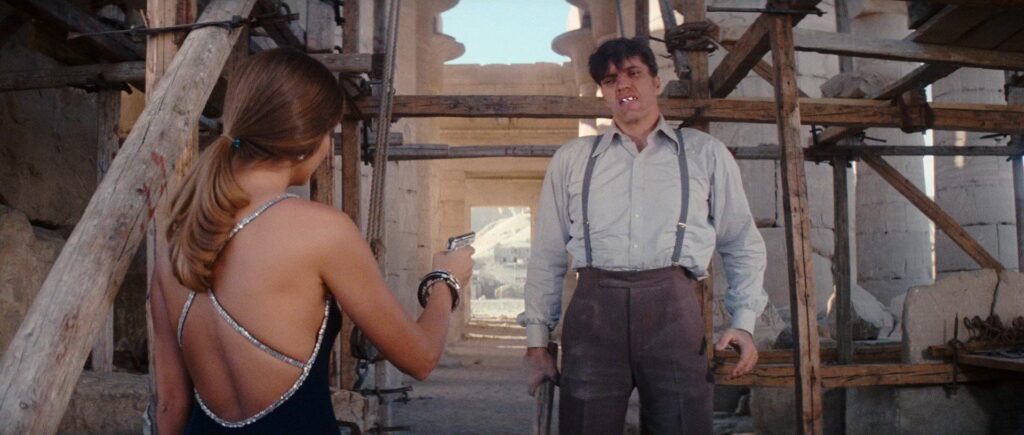
15. **The Spy Who Loved Me (1977)**While many James Bond films feature spectacular vehicular action, the chase from “The Spy Who Loved Me” truly has it all, earning its place as the quintessential Bond car pursuit. It’s a gadget-filled, action-packed thrill ride that perfectly embodies Roger Moore’s suave, nonchalant 007.
Bond finds himself pursued by an array of formidable adversaries, including gun-wielding henchmen, a murderous motorcyclist with an explosive sidecar, an incredibly adept helicopter pilot, and even divers armed with spearguns. Each is dispatched with Bond’s signature blend of cool competence and an arched eyebrow, making every moment pure cinematic gold.
The helicopter segment is particularly breathtaking, as the chopper pivots on a dime, relentlessly pursuing Bond. For a heart-stopping moment, it seems there’s no escape for our hero. But this is Bond, and escape is always an option, especially when driving a car like the Lotus Esprit.
In a truly iconic move, Bond drives his sleek Lotus Esprit straight into the sea, revealing its astonishing ability to transform into a fully functional submarine! The Esprit isn’t just one of Bond’s best-designed cars; it’s packed with as many ingenious gadgets as any Aston Martin. This audacious transformation cemented its legendary status and thrilled audiences worldwide.
The chase culminates with the classic Bond gag: a bewildered bystander, witnessing something utterly unbelievable, double-takes and then stares at their drink in disbelief. It’s a perfect blend of high-tech action, daring stunts, and quintessential Bond humor. What more could you possibly ask for in a thrilling cinematic spectacle?
Read more about: Blast from the Past: 6 ’60s TV Icons Who Deserved Their Own Spin-Offs
And there you have it, folks! From the grittiest, most realistic urban pursuits to the most outlandish, musically choreographed ballets of destruction, we’ve journeyed through 15 of the most iconic car chases in cinematic history. These aren’t just scenes; they are masterpieces of choreography, stunt work, and directorial vision that tell compelling stories without a single word. They push the boundaries of what’s possible on screen, leaving us breathless, exhilarated, and forever changed. Each roar of an engine, screech of tires, and impossible leap reminds us why we fell in love with action movies in the first place, and why these sequences continue to blow our minds, cementing their indelible mark on the silver screen for generations to come. So, next time you settle in for a film, keep your eyes peeled for that perfect blend of speed, skill, and sheer audacity – because a truly iconic car chase is a spectacle that never, ever gets old!

